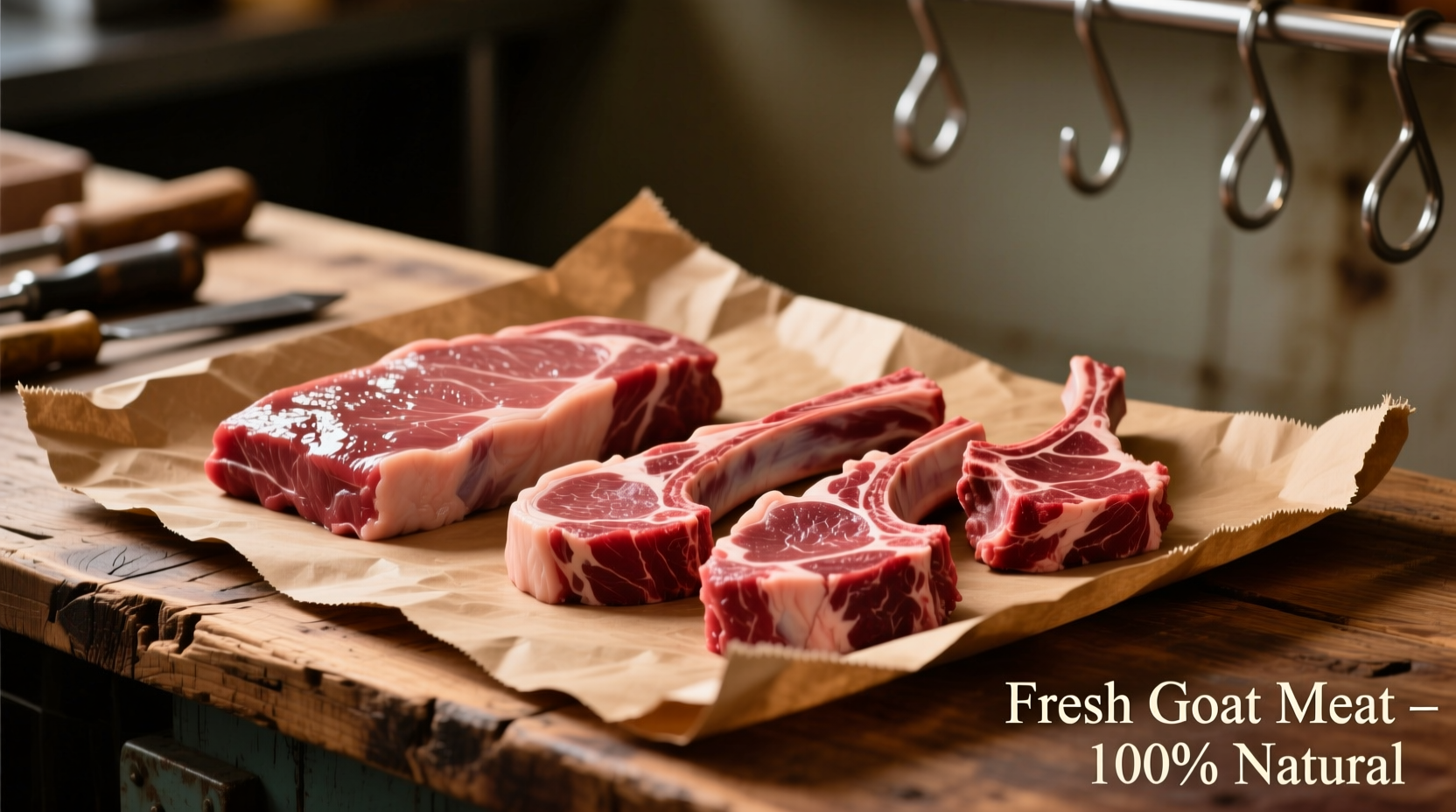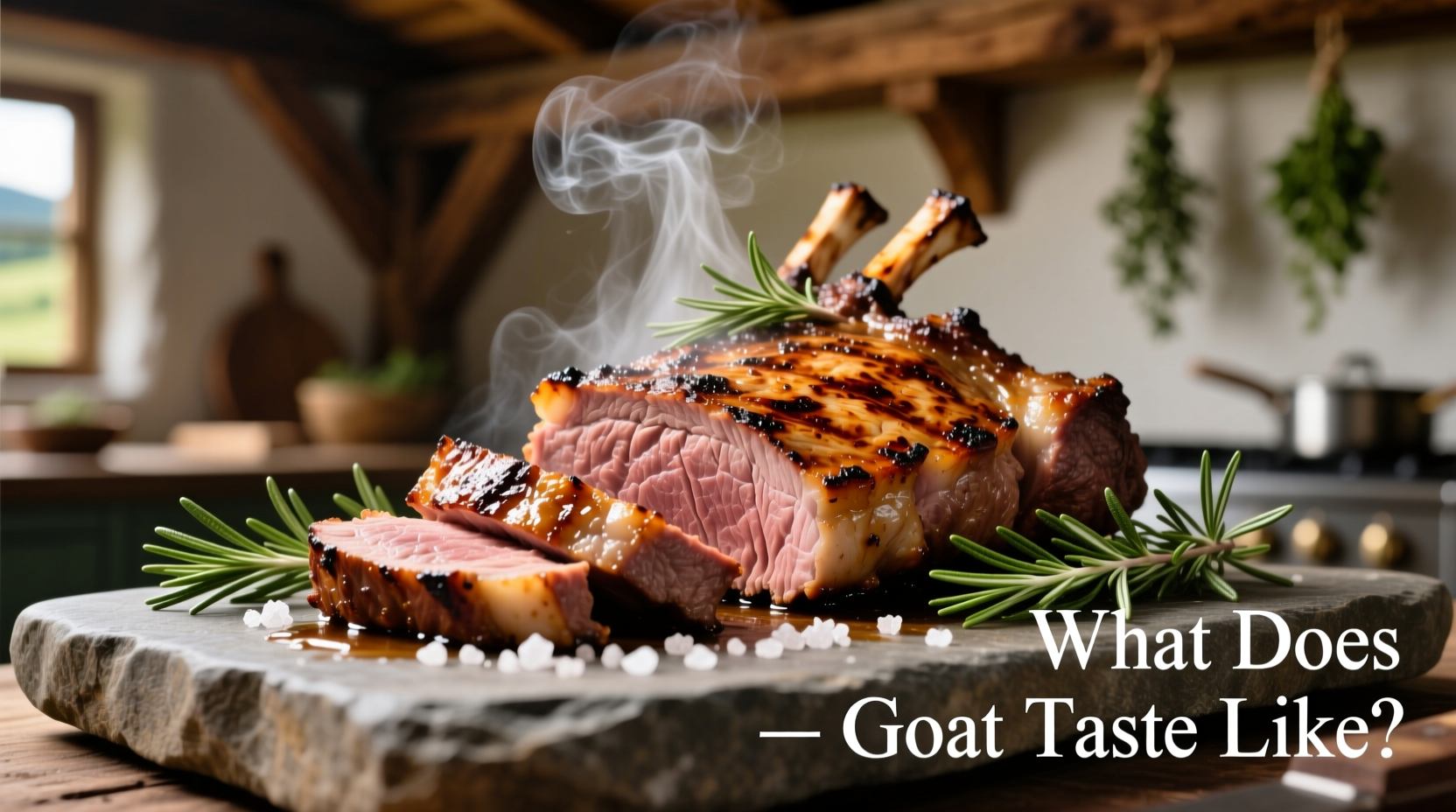Understanding Goat Meat's Unique Flavor Characteristics
When exploring what do goat taste like, you'll discover a complex flavor profile that sets it apart from more common meats. Unlike lamb, which has pronounced fattiness, goat delivers a cleaner, more delicate taste experience. The flavor can range from mildly sweet and nutty in younger animals (kids) to more robust and earthy in mature goats.
Culinary science explains this difference through the composition of fatty acids. Goat contains lower levels of branched-chain fatty acids responsible for the stronger 'gamey' notes found in other meats. This chemical profile creates what many describe as a 'cleaner' tasting red meat experience.

How Age and Diet Shape Goat Flavor
The age of the animal dramatically impacts what goat meat tastes like. Kids (under 8 months) offer the mildest flavor, making them ideal for first-time tasters. As goats mature, their flavor intensifies with more pronounced earthy notes. This progression follows a clear pattern:
| Age Category | Flavor Profile | Best Cooking Methods |
|---|---|---|
| Kid (under 8 months) | Mild, slightly sweet, delicate | Grilling, roasting, quick searing |
| Yearling (8-18 months) | Noticeable earthiness, balanced richness | Braising, stewing, slow roasting |
| Mature (18+ months) | Strong, robust, distinctly gamey | Slow cooking with acidic marinades |
Diet plays an equally crucial role in determining how goat tastes. Grass-fed goats develop more complex flavor notes reflecting their forage, while grain-finished animals yield milder meat. The USDA's Agricultural Research Service confirms that pasture diversity directly correlates with flavor complexity in goat meat (USDA ARS, 2023).
Goat vs. Lamb: Understanding the Flavor Differences
Many people wonder what does goat taste like compared to lamb. While both come from caprine animals, their flavor profiles differ significantly:
- Fat content: Goat has approximately 30% less fat than lamb, creating a leaner eating experience
- Flavor intensity: Lamb's distinctive 'lamby' flavor comes from higher levels of branched-chain fatty acids
- Texture: Goat's finer muscle fibers create a more tender texture when properly cooked
- Aftertaste: Goat leaves a cleaner finish without lamb's sometimes lingering fatty aftertaste
This comparison helps explain why many cultures prefer goat for everyday consumption—it offers similar nutritional benefits to lamb but with a more versatile flavor profile that adapts well to diverse seasoning approaches.
Global Preparation Techniques That Enhance Flavor
Cultural approaches to preparing goat reveal how to best appreciate what goat meat tastes like. Traditional methods address its lean nature while enhancing its natural flavors:
In Caribbean cuisine, Jamaican curry goat simmers the meat with aromatic spices and coconut milk, transforming tougher cuts into succulent morsels. West African peanut stews use groundnuts to create rich, flavorful sauces that complement goat's earthiness. Indian vindaloo preparations employ vinegar-based marinades to tenderize while adding bright acidity.
Professional chefs like those at the Culinary Institute of America recommend these evidence-based techniques for optimal results (CIA, 2024):
- Marinate with acid: Citrus or vinegar-based marinades break down connective tissue
- Low and slow cooking: Braising at 300°F for 2-3 hours yields fork-tender results
- Rest before slicing: Allows juices to redistribute for maximum tenderness
- Pair with bold flavors: Rosemary, garlic, cumin, and chilies complement goat's profile
Nutritional Benefits That Influence Taste Perception
The lean nature of goat meat directly impacts how goat tastes and why it's gaining popularity. With 23% fewer calories and 50% less fat than beef (per USDA National Nutrient Database), its cleaner flavor appeals to health-conscious eaters. The higher concentration of conjugated linoleic acid (CLA) contributes to its distinctive taste while offering potential health benefits.
Many first-time tasters report that understanding goat's nutritional advantages positively influences their perception of what goat tastes like. Knowing they're consuming a more sustainable, heart-healthy protein source often enhances the overall eating experience.
Common Misconceptions About Goat Flavor
Several myths persist about what does goat meat taste like. Contrary to popular belief, properly prepared goat isn't inherently 'gamey.' The misconception often stems from:
- Using inappropriate cooking methods for the cut
- Consuming meat from overly mature animals
- Lack of proper aging or marinating
- Cultural unfamiliarity with the flavor profile
Food anthropologists note that in regions where goat is commonly consumed—like the Mediterranean, Middle East, and Caribbean—consumers describe it as 'delicate' and 'versatile' rather than strong or off-putting (Journal of Ethnic Foods, 2023). This cultural context significantly shapes flavor perception.
Practical Tips for First-Time Goat Eaters
If you're curious about what goat tastes like and want to try it, follow these professional recommendations:
- Start with kid meat for the mildest flavor experience
- Choose bone-in cuts which add flavor during cooking
- Pair with bright, acidic elements like lemon or tomatoes
- Avoid overcooking—aim for 145°F internal temperature
- Try it in familiar preparations like tacos or curries first
Many specialty butchers now offer goat specifically raised for culinary purposes, with controlled diets and optimal slaughter ages to maximize flavor quality. This represents a significant improvement over older perceptions of goat meat quality.
Why Goat Flavor Varies by Region
The flavor of goat reflects its terroir—much like wine or cheese. Regional differences in what goat tastes like stem from:
- Local forage: Mountain goats develop different flavor notes than desert or tropical varieties
- Cultural breeding practices: Some regions selectively breed for specific flavor characteristics
- Traditional preparation methods: Local spices and cooking techniques shape expectations
- Climate impact: Temperature affects fat composition and muscle development
For example, Nubian goats raised in arid regions often develop more intense flavor profiles than Alpine breeds in temperate climates. This regional variation explains why goat tastes different depending on where you try it—a factor many first-time tasters don't consider when asking what does goat taste like.
Frequently Asked Questions
Below are answers to common questions about goat meat flavor and preparation:











 浙公网安备
33010002000092号
浙公网安备
33010002000092号 浙B2-20120091-4
浙B2-20120091-4